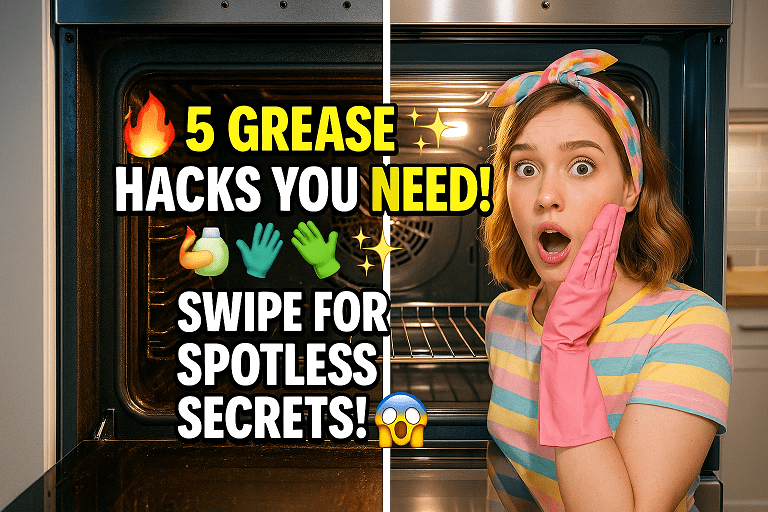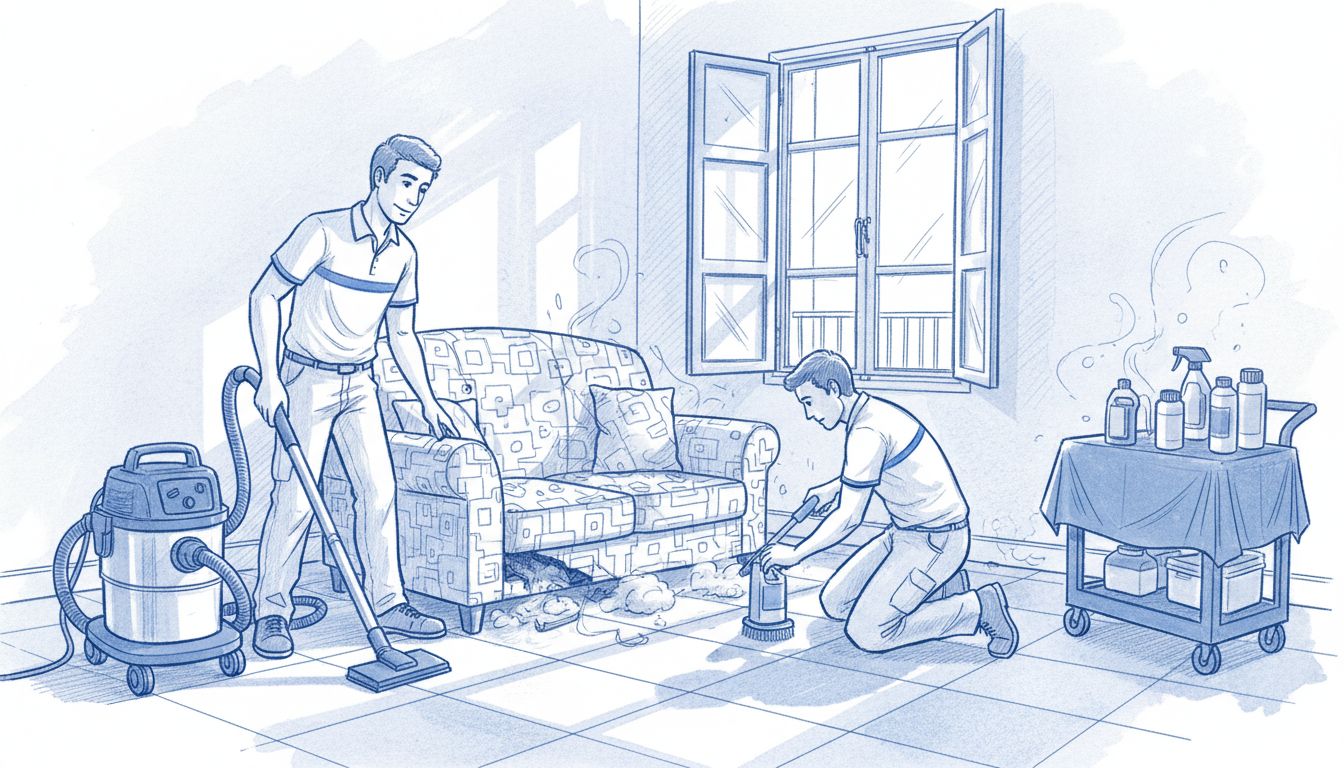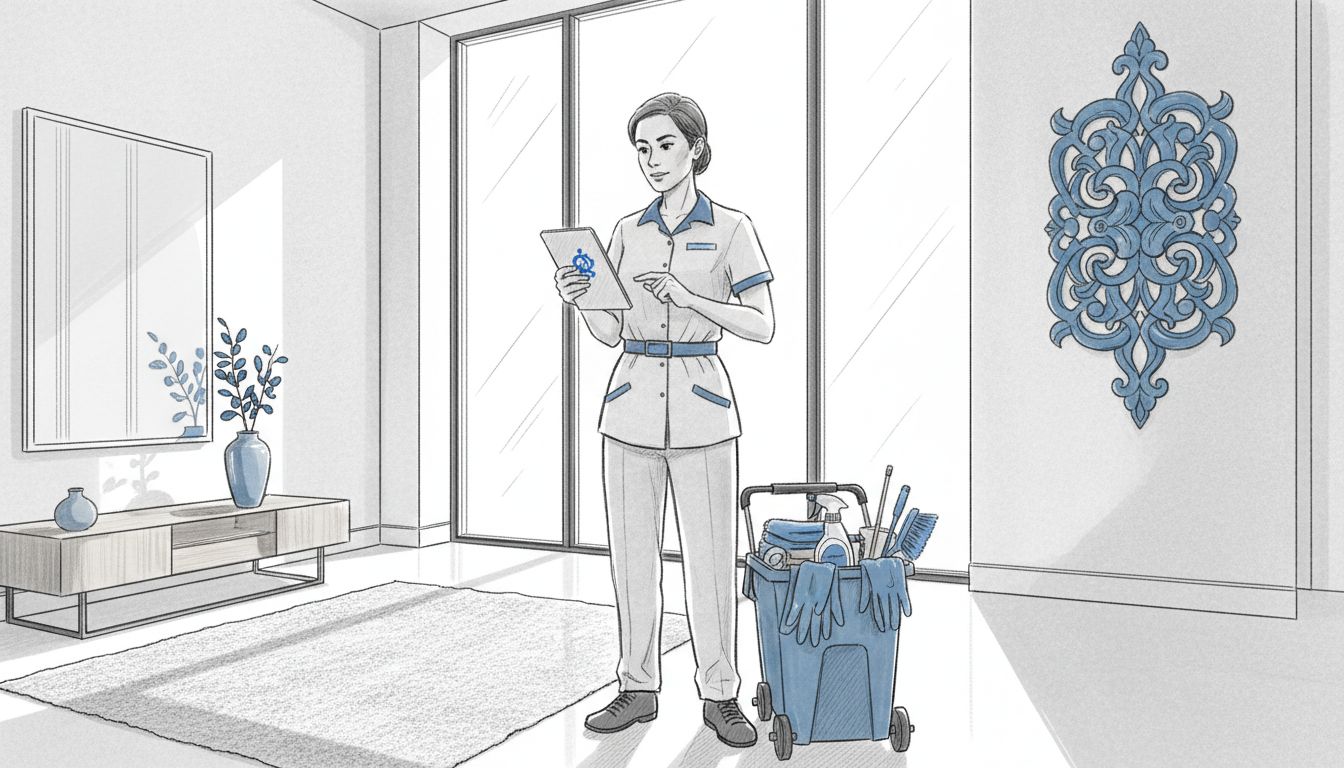Best all‑purpose method: Make a paste of ½ cup baking soda + warm water, spread on a cool oven (avoid elements/vents), leave 20–30 minutes (or overnight for heavy soil), then wipe and rinse. For stuck grease, mist with white vinegar and wipe again. Ventilate during cleaning.
If you prefer fewer fumes, choose the low‑tox degreaser. If you use Self‑Clean, remove racks and ventilate the kitchen.
Safety first
- Ventilate: Cooking and oven cleaning elevate fine particles and irritants (e.g., acrolein/formaldehyde). If gas is present, NO2/CO can also rise. Use an outdoor‑vented hood or open windows while cleaning or running Self‑Clean.[1][2][3]
- PPE: Gloves and eye protection, especially with commercial degreasers or caustics.
- Never mix chemicals: Do not mix bleach with ammonia or acids; toxic gases (chloramine/chlorine) can form.[4][5]
- Aluminum warning: Strong alkalis (lye) react with aluminum, releasing hydrogen gas; keep caustic products off aluminum parts/racks unless the label/manual allows it.[6]
- Follow your manual: For Self‑Clean, remove racks unless stated otherwise, and ventilate the kitchen.[7][8]
Choose your method
Tip: This suggests a starting method; always check your model’s manual.
Recommended: Choose options above
Method A — No‑chemical clean (baking soda + steam)
Best for: General grime, routine maintenance, minimal fumes.
Supplies: Baking soda, warm water, spray bottle, white vinegar, microfiber cloths, plastic scraper.
- Ensure the oven is off and cool. Remove racks.
- Mix a paste: ~½ cup baking soda + warm water.
- Spread on interior (avoid elements/vents). Leave 20–30 min (overnight for heavy soil).
- Place a pan with hot water in the oven for 10–15 min to create steam. Wipe residue.
- Mist with vinegar to neutralize and shine. Wipe dry.
Method B — Low‑tox degreaser (Safer Choice‑listed)
Best for: Heavy grease with faster dwell times, fewer fumes than lye.
Supplies: An EPA Safer Choice–listed degreaser, gloves, cloths.
- Ventilate. Apply product per label; let it dwell.
- Wipe with damp cloth; repeat for stubborn spots.
- Rinse surfaces that contact food with clean water.
Method C — Heavy‑duty caustic cleaner (PPE required)
Best for: Thick, polymerized grease. Use with caution.
- Ventilate; wear gloves/eye protection.
- Avoid aluminum components—lye corrodes aluminum and can release hydrogen gas.[6]
- Apply per label, allow dwell, then carefully wipe and rinse thoroughly.
Method D — Self‑Clean cycle (pyrolytic)
Best for: Heavy, baked‑on soils when you can ventilate well. Modern guidance suggests it’s generally safe for most ovens if used correctly.[9]
- Remove food debris and remove racks (unless your manual explicitly allows).[7]
- Ventilate—open windows/use an exhaust hood during the cycle.[7]
- Run Self‑Clean per manual; allow to cool fully; wipe ash with a damp cloth.
Typical electricity use per cycle is roughly ~5–8 kWh (model & soil dependent). See the Malta cost calculator below.[10][11][12]
Method E — Steam‑clean setting
Best for: Light soil; quicker, lower temp, more manual wiping afterward.
- Add water to the reservoir or pan per manual.
- Run cycle; wipe loosened soils with a cloth.
Special cases
Oven racks (chrome vs. enamel)
- Standard chrome racks: GE notes they can go through Self‑Clean but it’s not recommended because they may discolor and move less smoothly afterward. Hand‑clean instead.[13]
- Enameled “self‑clean” racks: Often safe to leave in (check manual).[7]
- DIY clean: Soak in hot water + dish detergent; scrub with a non‑scratch pad. For heavy grease, use a Safer Choice degreaser or paste of baking soda + water; rinse well.
Between the door glass panes
- Unplug the oven. Remove the door (per manual). Place on a padded surface.
- Open the inner panel (screws/clips) and clean glass with a damp microfiber + a little dish soap. Avoid soaking edges.
- Dry completely; reassemble; test door seal.
Catalytic liners
Follow the manufacturer’s instructions; avoid strong chemicals that may damage the coating. Wipe gently with warm water and mild detergent when cool.
Burnt sugar/syrup
Soften with warm water/steam; use a plastic scraper. Stubborn caramel may need repeated soaks; avoid metal scrapers that scratch enamel.
Prevention & simple schedule
- Wipe small spills after the oven cools.
- Use a lipped baking sheet to catch drips (no foil on oven floor).
- Run a quick Method A monthly; deeper clean every 3–6 months depending on use.
- Keep a window cracked or use an outdoor‑vented hood when roasting for fresher indoor air.[1]
Self‑clean cost (Malta) — quick calculator
FAQs
- What is the safest way to clean an oven?
- Use Method A (baking soda + steam) or a Safer Choice degreaser with good ventilation; avoid harsh chemicals on aluminum parts and follow your manual.
- Is it OK to use the Self‑Clean feature?
- Generally yes when used per the manual. Ventilate the kitchen, remove racks unless allowed, and wipe ash after cooling.[9][7]
- How much does a Self‑Clean cost?
- At ~5–8 kWh per cycle and Malta’s ~€0.13/kWh, expect roughly €0.65–€1.05 (use the calculator above).[10][11][13a]
- Can I use caustic oven cleaner in a self‑cleaning oven?
- Manufacturers (e.g., Whirlpool/GE) warn against using commercial oven cleaners on self‑clean enamel. Follow your model’s manual.[8][14]
Prefer hands‑free cleaning?
Book a vetted Rozie cleaner for your entire kitchen—anywhere in Malta.

Aleksandrs Tuls
Author & Co‑Founder, Rozie
Co‑creator of Malta’s first on‑demand cleaning app, Aleksandrs distils real‑world data into quick home‑care hacks.
Connect on LinkedIn
References
- EPA — Indoor Pollutants and Sources & Sources of Indoor PM. Link · Link
- Lawrence Berkeley National Lab / IEA Annex 86 — Cooking contaminants. Link
- Wojnowski W. et al. (2024) — Recirculating vs extracting hoods (VOCs). Link
- CDC/NIOSH & public‑health resources — Do not mix bleach and ammonia. Link
- EPA — Bleach and mixing cautions. Link
- New Jersey Dept. of Health — Sodium/Potassium Hydroxide factsheets (alkali reacts with aluminum, releasing hydrogen). NaOH · KOH
- GE Appliances — Self‑Clean tips (remove racks; ventilate). Link
- Whirlpool — Self‑Cleaning electric ranges manuals (do not use oven cleaners on self‑clean enamel). Link · Link
- Consumer Reports — Is it safe to run Self‑Clean? Link
- Green Building Advisor — Typical Self‑Clean ≈ ~8 kWh. Link
- Silicon Valley Power — Oven Self‑Clean ~6 kWh per cleaning (utility chart). Link
- Academic LCA/engineering data — short vs. long self‑clean cycles ~3.5–6.5 kWh. Link
- GE Appliances — Standard chrome racks & Self‑Clean (not recommended to keep inside). Link
- Eurostat — Malta household electricity price ≈ €0.1301/kWh (H2 2024). Link
- GE — “Cleaning options” page (no oven cleaner in self‑clean oven). Link



